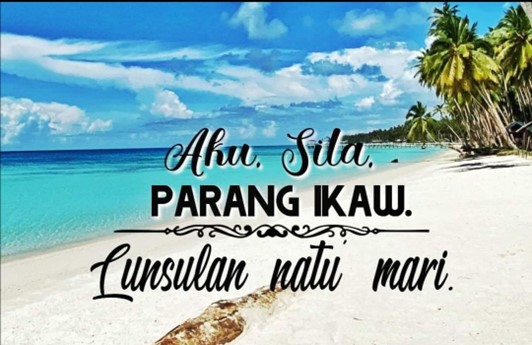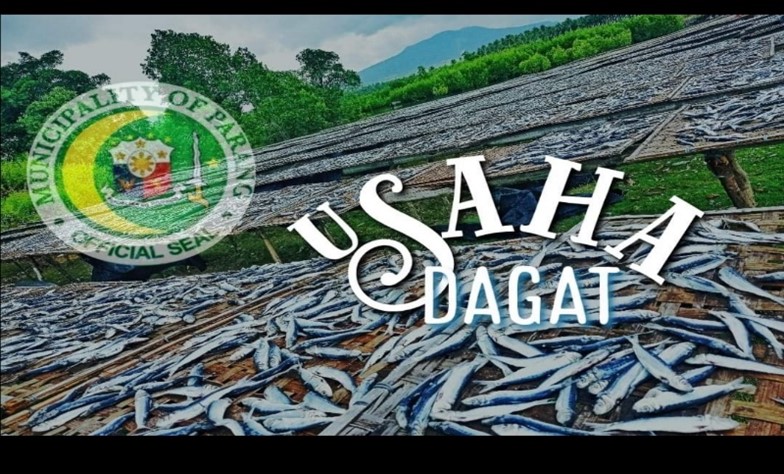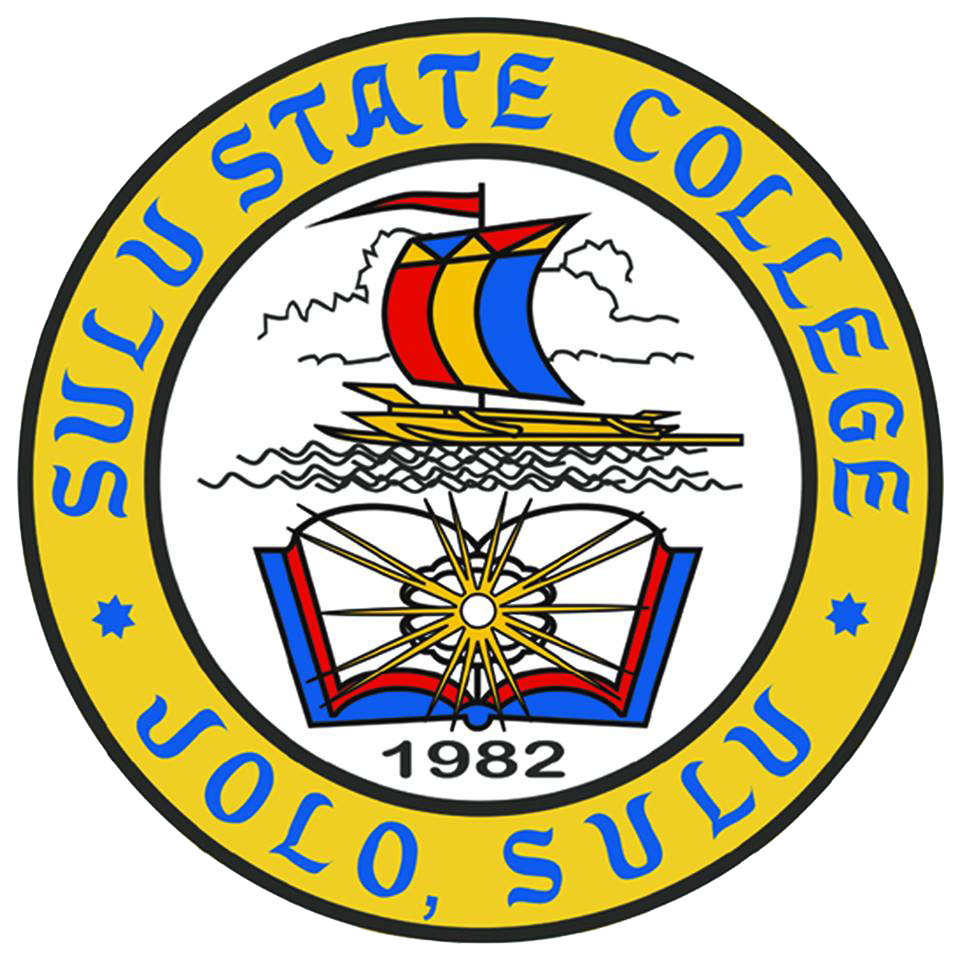MUNICIPALITY OF PARANG

HISTORICAL BACKGROUND
Both written and unwritten records on the founding history of the municipality of Parang are too limited as to be made on official account or basis thereon. History tells us that it is perhaps based and preserved in the memories of those old-folk residents and handed down from generation to generation thru what is popularly and locally known as “KISSA or SARSILLA”
During the Spanish era, original old folk residents of the place steadfastly fought with their own blood in resisting the tyrannical rule of the Spaniards who forcibly tried to change their Islamic Faith and convert them to Christianity. Battle after battles between the colonizers and the primitive faithful servants of Allah occurred. Armed only with their locally made bolos, kris and spears, they fought to the end unmindful of the powerful guns and cannons of the colonizers.
Parang, which in local dialect means “tall green grass” plain field, used to be the fighting ground or arena of every battle fought in the area during the Spanish regime.
Historical accounts revealed that the local warriors in the area used to hide behind the tall green grass called “Parang”. Some of them lying patiently while their other companions were openly making stand and fight the enemy with their “Puddang” (warrior weapon) hacking them to death in such like a grass-cutting style. Many died from both sides and as this fighting ground was fully-soaked then with the blood of these two protagonists. The area as time passed by, was called “Parang” and it remains so till date.
The municipality of Parang was created on March 03, 1917, pursuant to Commonwealth Act No. 2711. The municipal celebration was conspired to its Mother Unit Sulu, which is on September 18, 1819, tracing the date to the Sultanate era of governance.
During the “American Time” the Moro Province was subdivided into Davao, Cotabato, Zamboanga, Lanao and Sulu districts. The Municipality of Parang belongs to the sub-district of Sulu.
In 1946, the First Post-Liberation Governor was Atty. Calixto de Leon (AFP Colonel). He appointed Hadji Panglima Gani as the first Municipal Mayor of Parang Municipality.
Mayor Alkhadar T. Loong is the Current Municipal Mayor of the Municipality of Parang, Sulu.

The municipality of Parang consists of 40 barangays, it belongs to the first congressional district of Sulu. Barangay Poblacion is the center of governance, trade and settlement.
List of Barangays
|
Name of Barangays |
|
|
1. Kahoy Sinah |
21. Lupa Abu |
|
2. Buton Mahablo |
22. Kanaway |
|
3. Duyan Kabao |
23. Lungan Guitong |
|
4. Silangkan |
24. Poblacion |
|
5. Lanao Dakulah |
25. Nunukan |
|
6. Piyahan |
26. Buton |
|
7. Sampunay |
27. Laum Suah |
|
8. Lower Sampunay |
28. Tikong |
|
9. Alu Layag-Layag |
29. Laum Buwahan |
|
10. Kaha |
30. Bagsak |
|
11. Liang |
31. Lumbaan Mahaba |
|
12. Kutah Sairap |
32. Danapa |
|
13. Wanni Piyanjihan |
33. Paugan |
|
14. Alu Pangkoh |
34. Linuho |
|
15. Bawisan |
35. Bukid |
|
16. Payuhan |
36. Lipunos |
|
17. Biid |
37. Tukay |
|
18. Saldang |
38. Lagasan Higad |
|
19. Tumangas |
39. Gimba Lagasan |
|
20. Taingting |
40. Bulih Bawang |
GEOGRAPHICAL LOCATION
The Municipality of Parang is located southwest of the island of Jolo. It borders with the Municipality of Indanan to the northeast, the Municipality of Maimbung to the east and facing the Island of Tapul and Lugus to the South.
Jolo is the capital town and center of trade and industry of the province. It has three major highways leading to the 11 other municipalities within the island, one of which is southbound leading to the municipalities of Talipao, Maimbung, Indanan and Parang. There is another route, which formed a ‘Y’ section at Indanan Poblacion, passing along the seven (7) barangays of Parang such as Lanao Dakula, Silangkan, Alu Layag-Layag, Alu Pangkoh, Bawisan, Tumangas Tainting and Kanaway.
Parang is accessible from the town of Jolo by both land and sea transportation. It comprises of 40 barangays (shown at Table 2), 17 of which are located along the coastline. People from nearby island municipalities of Tapul and Lugus used to dock their pump boats at the Poblacion pier during stormy weather, which is usually accompanied by strong winds and rough seas. It is more on their advantages, with a short-distanced travel and a mere one-hour sacrificed, to lay anchor on this coastal municipality rather than proceed to Jolo directly.
There is an existing road network in the hinterland, which provides accessibility to residents in the interior. It is a
45-minute travel from downtown Jolo, approximately 22 kilometers away, and the transport service plying this route is regular during the day. All along this extend of road from the town of Jolo to Poblacion of Parang was concreted.
LOCATION MAP
Map of Parang, Sulu

Sulu Provincial Map

ECONOMY
FISHERY AND AQUA-MARINE RESOURCES
The municipality of Parang is very rich in marine resources such as seaweed, tropical fishes, seashells, and seahorse.
Sulary Island is identified as one of the fishing grounds of the municipality. Agar-agar is abundantly grown by around 1000 seaweed farmers in all the municipal coastal barangays. Each of them is cultivating at least an average of 0.40 hectares seaweed farm.
The abundance of this type of sea product is, however, without yet the application of modern methods. Poor harvest and poor-quality seaweed products are among the major problems in the area that need to be given preferential attention by LGU and other concerned agencies.

Parang coastline
A total of 101 tows were utilized in the reef profiling survey of Parang coastline from the boundary of Lagasan to Sunugan covering an estimated reef perimeter of 20.2 kilometers. The survey recorded that Parang coastline has the lowest average live coral cover of only 7.48% getting a POOR category. Only 1 tow in the coral reef at Caballion Point registered an excellent live coral cover and two (2) tows registered as a good category (31-50% live coral) in the vicinity of Loas Point. Coral destruction of the few remaining coral reef areas continues through the practice of using dynamite for fishing and overturning of coral heads in abalone gathering. Likewise, the low percentage of live cover of Parang coast could also be attributed to the sandy bottom substrates in the coastal reef areas.
However, the most visible destructions of corals in Parang coast are due to the populace practice of using corals as foundation materials for the construction of their homes, roads, and pier and other structures that needs rocks and boulders as construction materials.
Sulare Island
A total of 37 tows were utilized in the reef profiling survey of Sulare Island which recorded an average of 33.78% live coral cover getting a GOOD category. A big portion of Sulare Island, that is facing Sulu Sea (northern and the western portion of island), is where a long stretch of coral reef with good (31-50% live coral) to very good (51-75%) live coral cover can be found generating nearly 50% of the total reef perimeter. Only a small portion (10.81%) of the island recorded a poor category or very low live coral with 4 tows, while 37.84% of the total reef perimeter registered with fair (11-30% live coral cover) category.
The low level of live coral cover can be attributed to the presence of a high percentage cover of soft corals and sandy bottom substrates. However, traces of dynamite fishing practices were noted coming from the dead coral rubbles observed in the area.



Basing from the PSA 2015 census of population, the municipality of Parang, Sulu reached the total population of 62,172. In 2010 census, population of Parang reached 58,028 as against 54,994 in 2000 census. It registered an increase of 4,144 people in just a span of five-year period. This however, account for around 829 per annum for an annual growth rate of 1.43 percent.
In comparison population in year 2010 is 58,028, as against 54,994 in year 2000, in five years there is an increase of 3,034. This accounts for around 304 increase per annum. Computed annual growth rate is 1.10 percent. There is an increase of 0.1 percent of population growth between 2010 and 2005.
The populace who economically dislocated before are now returning to their own home place; and some of them have a dual residence in the town of Jolo but in time of survey they prefer for inclusion in their home place
TRIBES, LANGUAGE SPOKEN, RELIGION AND CULTURAL
HIGHLIGHTS
98% of the total populations are “Tausug” while the remaining 2% comprises of “Badjao” who reside in the coastal area and “Bisaya” who migrated from their own home town looking for the sustenance of their socio-economic livelihood. Languages used in communication are Bahasa Sug, Tagalog, English Siyamal and Cebuano. Among these languages,
Bahasa Sug is commonly used in communicating each other including the Badjao, Bisaya and other ethnics groups.
Islam is the dominant religion in the municipality. Helpers/ workers in the “PALAKAYA” and other business establishment coming from neighboring provinces who practiced Catholic belief are minimal. As embodied in the preaching of Islam, people usually give importance to the observance of the following:
- Hari-Raya Eidel Fitri Al-Mubarak
- Hari-Raya Eidel Adha
- Mauludeen Nabie
- Al Isra’ wal Miraj
Hari-Raya Eidel Fitri Al-Mubarak Festival


Other local incomes are minimal which derived from real state property taxes, business taxes, permit and other regulatory fees.
In terms of expenditures, 33.642 percent is allotted to personal services for the Municipal Elected and Appointed Official and Municipal Employees comprises of permanent, casuals and contractual. Other incomes are floriated to Administration and Infra, Social Services, Economic Development, Environmental Management, Maintenance and Operating Expenses (MOE) of the Municipal Officials and subsidies to other LGU’s, NGA’s and NGO’s.
IV.2-TRADE and INDUSTRY
The trade and industry operation in the municipality is minimal in scale. It is only enough to respond to the residents’ instant demands for some home consumption. Native residents possess technical know-how in Basket making,
Mat/Cloth weaving and Nipa-Hut making, but those are just household local activities and not fully developed into a bigger and highly competitive commercial production due to lack of capital and the non-availability of market outlet for ready disposition of their finished products.
AGRICULTURE
People Engaged in Agriculture and Fishery

Most of the people in the lowland and hinterland are engaged in farming which totaled to 6155. The male still dominates in farming with seventy-five percent (75%) who does the main activities in farming. The female group composing the remaining twenty-five percent (25%) also engage themselves to farming and at the same time does the support services to farmers such as harvesting and processing of farm produce.

There are also several people engaged in agricultural and fishery trading. These people are very instrumental for the marketing of the agricultural and fishery products within the municipality and to the other neighboring municipalities.
The Municipal Government also supports the farmers and fisher-folk by providing their respective support services. Agricultural and Fishery Support services are also coordinated by the local government with the Provincial Government Agencies.

Pis Syabit is a Tausug traditional woven head-cloth made from cotton or silk (or with gold- threads) characterized with intricate geometric patterns of colors segmented into the smallest squares, triangles, and diamonds.
The most recognized community of Pis Syabit weavers in Sulu are from barangay Guimba Lagasan in the Municipality of Parang. This is also where the late master Derhata Sawabi, a GAMABA awardee of 2005 (National living treasure) came from. Barangay Guimba Lagasan Parang, Sulu weavers are
well-known for their expertise in the craft, their bold contrasting colors, evenness of their weave and their faithfulness to traditional designs.
Pis syabit is intricately woven at the house of the Tausugs. Most elder weavers devoted their full time to their craft. They even teach and pass on this tradition to interested young generation
Sulu Travels

Developed by the Sulu State College ST Team to promote the beautiful place of the Province of Sulu.
Partnership


Contact Person:

JULKIRAM A. ARASTAM
Provincial Tourism Officer
Province of Sulu
Mobile No.: 0966-3859437
Email: Jules.arastam17@gmail.com
Jules Arastam
FB Page: Sulu Provincial Tourism Office